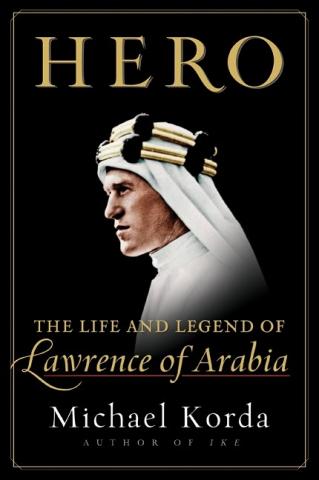Hero: The Life and Legend of Lawrence of Arabia

T.E. Lawrence is brought magnificently to life in a new biography by Michael Korda. By Lorraine Courtney.
Peter O’Toole immortalised him as an enigma wrapped in Arab robes, galloping on a camel across the desert plains in David Lean’s epic film. Documentaries and no less than 56 biographies launched a thousand myths. But they still haven’t answered the question asked by one of Lawrence of Arabia’s many exasperated commanding officers, “Who is this extraordinary pipsqueak?”
For readers who already know a lot about Lawrence, this rapturous biography will be a feast. The title betrays a lot; Korda is an unabashed fan, detailing Lawrence’s extraordinary achievements as an innovative guerrilla leader. Korda compares Lawrence to Maecenas, Machiavelli, Howard Hughes and to Princess Diana. When Lawrence entered Damascus ahead of the British and then reversed full-throttle in an open-top Rolls Royce, Kordas says, “It was as if Princess Diana had vanished from her home and had been discovered by the press enlisted in the ranks of the RAF as Aircraftwoman Spencer, doing drill, washing her own undies.”
Right from his birth in 1888, Lawrence’s life was gloriously unconventional. His mother was a Scottish governess, his father her employer, an Anglo-Irish landowner who abandoned his family to start a new life with his strong-willed mistress. Yet this illicit union produced five sons, much joy and what Korda portrays as an intensely loving, sunny boyhood. After Oxford Lawrence worked on archaeological digs in the Middle East and with the advent of war in 1914 his knowledge of Arabia became invaluable.
Soon he was heading up the Arab revolt against the Ottoman Turks. This revolt still fires the imagination but can always be dismissed as a sideshow compared to the significant allied campaigns against the Ottoman Empire like Gallipoli and compared to the action on the western front. But, for one splendid, dashing year, in 1917, Lawrence and his troops disrupted supply routes, attacked columns and repeatedly blew up the Hejaz railway line connecting Damascus to Mecca. They succeeded in diverting the Turks from attacking the Suez canal and trailblazed an original and unique form of guerrilla warfare that would later inspire Orde Wingate; the Long Range Desert group; the SAS; Maoist guerrillas, and anyone who since planted a roadside bomb.
So after this brief period of glory, what was left for Lawrence? He engaged in shuttle diplomacy, and was instrumental in the creation of today’s Lebanon, Iraq and Jordan. But the pan-Arab state, the independent “greater Syria” for which his fellow guerrillas had fought and died was never going to happen and this sickened him with guilt. Eventually Lawrence sought obscurity in the RAF and was killed in a motorbike accident in 1935, aged just 46.
A word of warning about Hero: the lay reader might feel as though he has stepped onto a biographical battlefield, with Korda devoting too much time to defending his hero against obscure, earlier depictions. Nevertheless, Korda brings one of the 20th century’s most extraordinary figures magnificently alive in his monumental portrait. And a story about T.E. Lawrence’s life is always going to be worth reading for its insights into Middle Eastern history.
